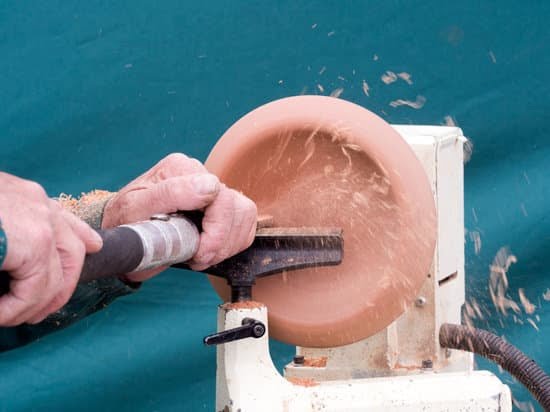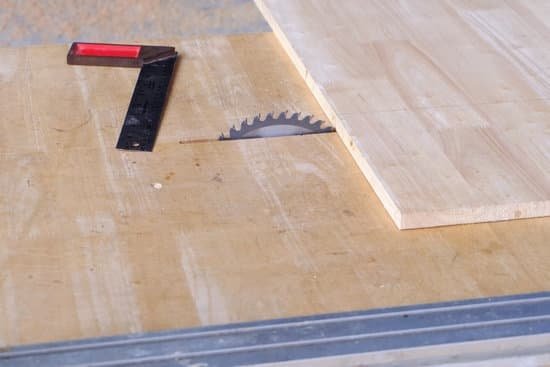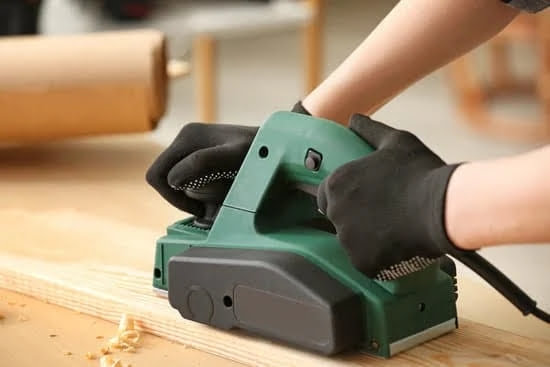Are you interested in learning how to make a stool woodworking? Stools are not only functional pieces of furniture but also serve as great beginner woodworking projects. In this blog post, we will provide you with a comprehensive guide on creating your own stool from scratch.
Stools play a vital role in woodworking, whether it be for seating or as a decorative element in a room. They are versatile pieces that can be customized to suit various styles and purposes. Throughout this article, we will delve into the different aspects of crafting a stool, from selecting the right wood to final assembly.
From choosing the right type of wood to finishing techniques, we will cover every step involved in making a stool through easy-to-follow instructions and helpful tips. By the end of this blog post, you will have the knowledge and confidence to embark on your woodworking journey and create a beautiful stool that showcases your craftsmanship. So, let’s get started on this fulfilling woodworking project.
Choosing the Right Wood
Choosing the right type of wood is crucial when embarking on a woodworking project, especially when making a stool. The choice of wood will not only affect the aesthetic appeal of the finished product but also its durability and strength. When selecting wood for your stool project, it’s important to consider factors such as hardness, grain pattern, and color.
Hardwoods like oak, maple, cherry, and walnut are popular choices for stools due to their strength and durability. These woods are less likely to warp or break under constant use. Softwoods like pine or cedar can also be used for stools but may require additional reinforcement for long-lasting durability.
In addition to hardness, consider the grain pattern of the wood. Some woods have beautiful and distinct grain patterns that can add character to your stool. The color of the wood should also be taken into account when selecting the right type of wood for your project.
Remember that different types of wood can be stained or painted to achieve a desired finish, so don’t limit yourself based on color alone. By carefully considering these factors, you can choose the right type of wood that will result in a beautiful and sturdy stool for your woodworking project.
Tools and Materials Needed
When it comes to woodworking and creating your own stool, having the right tools and materials is essential. Without the proper equipment, the process can become challenging and may not result in a well-constructed piece. In this section, we will outline the essential tools and materials needed for making a stool through woodworking.
First and foremost, you will need basic hand tools such as a tape measure, pencil, square, handsaw or circular saw for cutting wood, chisels for carving out joints, hammer or mallet for assembling parts together, and a drill with drill bits for creating holes. Additionally, having clamps on hand will be beneficial for holding pieces in place during assembly.
In terms of materials, selecting the right type of wood is crucial for your stool project. Common types of wood used in woodworking include oak, pine, cherry, walnut, maple, and birch. Each type of wood has its own characteristics in terms of grain pattern, durability, and appearance.
It is important to choose a wood that suits your design aesthetic and budget when making a stool. Remember to also consider factors such as sustainability and environmental impact when choosing your wood material for the project.
Design and Measurement
When it comes to making a stool through woodworking, one of the crucial aspects is designing and measuring the stool accurately. This step will set the foundation for the construction process and ensure that your stool turns out both functional and aesthetically pleasing.
Design
Begin by sketching out your stool design on paper or using a computer software program. Consider factors such as the stool’s height, width, seat shape, and number of legs. Think about the overall style you want to achieve – whether it’s a rustic farmhouse look or a modern minimalist design. Having a clear design plan before starting will make the construction process smoother and more efficient.
Measurement
Once you have finalized your design, it’s time to take accurate measurements for each component of the stool. Measure the length, width, and thickness of the wood needed for the legs, seat, and any additional support pieces. Double-check all measurements to avoid errors during cutting and assembling later on. Remember that precise measurements are key to ensuring that all components fit together seamlessly in the final product.
Tips for Accuracy
- Use a combination square or ruler to mark straight lines for cutting.
- Label each piece of wood with its designated part (e.g. front leg, back leg) to avoid confusion during assembly.
- Always measure twice before making any cuts to prevent wastage of materials.
By following these steps for designing and measuring your stool accurately, you will be well-prepared for the next stages of cutting, shaping, joinery, and finishing in your woodworking project.
Cutting and Shaping
When it comes to creating a stool through woodworking, one of the crucial steps is cutting and shaping the wood to achieve the desired design. Before you start this process, it’s essential to have a clear vision of how you want your stool to look like. Consider the height, width, and style of your stool before making any cuts.
Begin by marking the measurements on the wood according to your design plan. Use a measuring tape and a pencil to mark where you will cut for the legs, seat, and other components of the stool. Make sure your measurements are precise to ensure that all parts fit together correctly during assembly. Double-check your measurements before cutting to avoid any mistakes that may affect the final result.
Once you have marked out all the necessary cuts, it’s time to bring out your tools for cutting and shaping the wood. Depending on your design, you may need a saw for cutting straight lines or a jigsaw for more intricate shapes.
Take your time when cutting the wood to ensure clean and accurate cuts. Remember that patience and precision are key when working on woodworking projects like making a stool – rushing through this step can lead to errors that may be difficult to fix later on in the process.
After cutting out all the components for your stool, it’s important to shape each piece accordingly. Use tools like sandpaper or a router to smooth out rough edges and create rounded corners for a comfortable finish.
Pay attention to detail during this step as well, as minor imperfections in shaping can impact both the aesthetics and functionality of your finished stool. By following these steps closely in cutting and shaping your wood, you’ll be one step closer to creating a beautiful handmade stool through woodworking techniques.
Joinery Techniques
When it comes to woodworking, joining pieces of wood together is a crucial step in creating sturdy and durable furniture pieces like stools. One of the most common joinery techniques used in stool making is the mortise and tenon joint.
This classic joint involves cutting a square or rectangular hole (mortise) in one piece of wood and creating a matching projection (tenon) on the other piece to fit snugly into the mortise. This type of joint provides excellent strength and stability, making it ideal for constructing stools that will withstand everyday use.
Another popular joinery technique used in woodworking is the dovetail joint. Known for its strength and aesthetic appeal, dovetail joints are often used in high-quality furniture pieces like stools.
The interlocking shape of a dovetail joint creates a strong bond that resists pulling forces, making it perfect for stool legs or frames that need to support weight. While more challenging to master than other joinery techniques, the beauty and durability of dovetail joints make them a worthwhile addition to any stool-making project.
For those looking for a simpler yet effective method of joining wood together in stool construction, using dowels can be an excellent option. Dowel joints involve drilling holes into two pieces of wood and inserting wooden dowels coated with glue to connect them securely.
This technique is relatively easy to learn and execute, making it suitable for beginners or those looking for a quick assembly process without compromising on strength. Whether you choose mortise and tenon joints, dovetail joints, or dowel joints, selecting the right joinery technique for your stool woodworking project can greatly impact the final result in terms of both aesthetics and functionality.
Sanding and Finishing
When it comes to woodworking projects like making a stool, sanding and finishing are key steps that can make a significant difference in the final result. Sanding is crucial for achieving a smooth surface and ensuring that the stool looks polished and professional. In this section, we will discuss some essential tips on sanding your stool to perfection and provide suggestions for finishing techniques such as staining or painting.
Importance of Sanding
Sanding is an important step in any woodworking project as it helps to remove rough edges, uneven surfaces, and any imperfections in the wood. It also prepares the wood for finishing by creating a smooth surface that allows the stain or paint to adhere properly. By taking the time to sand your stool thoroughly, you can enhance its appearance and ensure a professional-looking finish that will be long-lasting.
Tips for Sanding Your Stool
- Start with coarse sandpaper (around 80-100 grit) to remove any tool marks or rough spots on the wood.
- Progressively move to finer grit sandpaper (such as 150-220 grit) for a smoother finish.
- Always sand in the direction of the wood grain to avoid causing scratches or damage.
- Use a sanding block or backing pad to ensure even pressure across the surface of the stool.
- Check your progress frequently by running your hand over the surface to feel for any imperfections that need more sanding.
Finishing Techniques
After sanding your stool to perfection, you have the option to apply a finish such as staining or painting to enhance its appearance and protect the wood. Staining can add color and depth to the wood while still allowing its natural beauty to show through.
On the other hand, painting provides an opportunity to customize your stool with endless color options. Whichever finishing technique you choose, make sure to follow instructions carefully, apply even coats, and allow proper drying time between layers for best results in completing you woodworking project on how o make a stool woodworking.
Final Assembly
Once you have cut, shaped, and prepared all the components of your stool, it’s time for the final assembly. This is where all your hard work and meticulous planning come together to create a functional and beautiful piece of furniture. Follow these detailed instructions on how to put all the components together and assemble your stool:
- Start by assembling the legs: Begin by attaching the stretchers to the legs using the joinery technique of your choice. Whether you opt for mortise and tenon joints, dovetail joints, or dowel joints, make sure they are secure and aligned properly.
- Attach the seat: Once the legs are securely connected, it’s time to attach the seat to complete the basic structure of the stool. Ensure that it is centered and level before securing it in place.
- Reinforce connections: To add strength and stability to your stool, consider adding corner braces or brackets at critical junctures where additional support may be needed.
Now that all the components are assembled, take a step back and admire your handiwork. You have successfully created a custom-made stool through woodworking techniques that showcase both skill and creativity. Whether you choose to stain or paint your stool for a personalized touch, remember that each step of this process has contributed to a piece of furniture that is uniquely yours.
Remember, making a stool through woodworking requires patience, precision, and attention to detail. By following these detailed instructions on selecting wood, choosing tools and materials, designing, measuring, cutting, shaping, joining pieces together effectively with different techniques like mortise and tenon joinery structures such as dovetail joinery or dowel rods; sanding smoothly finishes; then finally assembling everything into one cohesive unit – you can create an attractive yet sturdy piece.
Conclusion
Stools are not just a functional piece of furniture but also an excellent woodworking project for beginners and experienced woodworkers alike. From choosing the right type of wood to mastering joinery techniques, making your own stool can be a fulfilling and rewarding experience. By following the steps outlined in this blog post on “How to Make a Stool Woodworking,” you can create a custom piece that fits your style and needs perfectly.
Selecting the appropriate wood is crucial in ensuring the durability and aesthetics of your stool. By considering factors like hardness, grain pattern, and availability, you can choose the best type of wood for your project. Additionally, having the right tools and materials at hand will make the construction process smoother and more efficient. With tools like saws, chisels, clamps, and sandpaper, you can accurately cut, shape, and finish each component of the stool.
Designing and measuring the stool correctly are essential steps that lay the foundation for a successful woodworking project. By following detailed instructions on calculating dimensions and proportions, you can create a well-balanced and sturdy stool. Assembling all components using joinery techniques like mortise and tenon or dovetail joints will ensure that your stool is strong and stable.
Finally, sanding the surface to achieve a smooth finish before applying staining or painting techniques will enhance the overall look of your handmade stool. So why not give it a try? Follow these steps on how to make a stool woodworking and unleash your creativity in crafting a unique piece of furniture for your home or workspace.
Frequently Asked Questions
How Do You Make a Wooden Stool at Home?
Making a wooden stool at home requires basic woodworking skills and tools like saws, sanders, and drills. You would start by cutting the wood into appropriate pieces for the seat and legs, then assemble them using screws or glue. Sand down any rough edges for a smooth finish.
What Is the Best Wood to Make Stools?
The best wood to make stools depends on personal preference and intended use. Hardwoods like oak, maple, or cherry are popular choices due to their durability and strength. Softwoods like pine or cedar can also be used for a more rustic look but may not be as sturdy.
What Wood Is Good for Stools?
When choosing wood for stools, it’s essential to consider factors like strength, durability, and appearance. Hardwoods are generally preferred over softwoods due to their ability to withstand daily use and wear.
Woods like oak, maple, or walnut are commonly used for their strength and attractive grain patterns. Ultimately, the best wood for stools will depend on individual preferences and intended use of the furniture piece.

Hi everyone! I’m a woodworker and blogger, and this is my woodworking blog. In my blog, I share tips and tricks for woodworkers of all skill levels, as well as project ideas that you can try yourself.





